Konkani recipe – Devasthana saaru
Introduction
The Konkani community, known for its unique culinary traditions, has a treasure trove of traditional recipes that reflect its deep connection to nature and spirituality. One such dish is Devasthana Saaru, a simple yet flavorful soup-like preparation that holds a special place in both temples and homes.
Saaru, also called rasam in other parts of South India, is a beloved dish that is light on the stomach yet rich in flavor. Devasthana Saaru, in particular, stands out due to its role in religious ceremonies and its distinctive blend of spices, coconut, and tamarind.
The term “Devasthana” translates to “temple” in Kannada, and the name itself suggests that this dish has spiritual significance. Often made as an offering to deities, this saaru brings together roasted spices, fresh coconut, and tangy tamarind to create a dish that is both comforting and elevating. While its flavors are complex, the ingredients are humble, reflecting the simplicity of temple food.
In Konkani cuisine, Devasthana Saaru is typically enjoyed with steamed rice, but it also works wonderfully as a standalone soup, making it a versatile dish that can be adapted to various meals, from simple dinners to festive spreads.
Whether you’re familiar with Konkani cuisine or trying it for the first time, this recipe is a must-try for anyone who appreciates the depth of South Indian flavors.
Looking for more traditional Konkani dishes for your lunch or dinner? Don’t forget to check out our Tovve Saaru, another staple in Konkani households that pairs wonderfully with rice or chapati.

Key Ingredients and Substitutes
Creating an authentic Devasthana Saaru requires carefully selecting and balancing a few essential ingredients. Each element in this recipe plays a vital role in developing its distinct flavor profile. Let’s take a closer look at the key ingredients and discuss potential substitutes that can be used based on your dietary preferences or ingredient availability.
1. Red Chillies
Red chillies are a crucial component of Devasthana Saaru, as they provide the much-needed heat and depth. For this recipe, dried red chillies are traditionally used, imparting a smoky flavor when roasted. The level of spiciness can vary based on the variety of red chillies used. For a milder heat, you can substitute regular red chillies with Kashmiri red chillies, which are known for their vibrant color but have a much milder heat profile.
Substitute: If you’re out of dried red chillies, you can use red chilli powder or paprika as a backup. However, it’s best to adjust the quantity to avoid overpowering the dish.
2. Mustard Seeds and Curry Leaves
The tempering, or “tadka,” is what elevates many South Indian dishes, and this one is no exception. Mustard seeds add a slightly pungent taste and a distinct aroma when they splutter in hot oil. Curry leaves, on the other hand, are irreplaceable in their fragrance and flavor, offering a fresh, slightly bitter undertone that complements the spiced broth beautifully.
Substitute: If you can’t find fresh curry leaves, you may use dried curry leaves or simply omit them. The flavor won’t be as strong, but the dish will still be delicious.
3. Coriander Seeds and Cumin Seeds
Roasted coriander seeds and cumin seeds form the backbone of Devasthana Saaru’s flavor. These seeds, when roasted, release their essential oils, which deepen the flavor of the dish. Coriander seeds provide a citrusy and earthy note, while cumin seeds bring a nutty, slightly spicy taste. Roasting these seeds before grinding them into a powder is essential for unlocking their full flavor potential.
Substitute: If whole coriander seeds or cumin seeds aren’t available, you can use their ground counterparts, though the flavor will be less intense. Remember to adjust the amount, as ground spices are more concentrated.
4. Grated Coconut
The use of freshly grated coconut is one of the hallmarks of Konkani cuisine. It adds a rich creaminess and subtle sweetness to the saaru, balancing out the heat and tanginess from the other ingredients. Fresh coconut is preferred for its texture and flavor, but if it’s unavailable, you can use frozen or dried coconut as a substitute.
Substitute: If using dried grated coconut, soak it in warm water for 10 minutes to rehydrate it before adding it to the recipe. This will help restore some of its moisture and mimic the texture of fresh coconut.
5. Turmeric Powder
No South Indian dish is complete without turmeric powder, and Devasthana Saaru is no exception. This golden spice not only adds a beautiful color to the dish but also brings a subtle earthiness that enhances the overall flavor. Turmeric is well-known for its anti-inflammatory properties and is commonly used in traditional Indian cooking for its medicinal benefits.
Substitute: If you don’t have turmeric powder, you can use fresh turmeric root, though the flavor will be slightly different. Grate about half a teaspoon of fresh turmeric root and add it along with the other spices.
6. Tamarind Pulp
Tamarind is responsible for the tangy, sour flavor that makes Devasthana Saaru so refreshing. It provides a natural sourness that balances the spiciness of the red chillies and the creaminess of the coconut. If tamarind pulp isn’t available, you can substitute it with other souring agents like lemon juice or vinegar, though these won’t provide the same depth of flavor.
Substitute: Lemon juice or vinegar can be used in small quantities to add a tangy note, but the final dish may lack the complexity that tamarind brings.
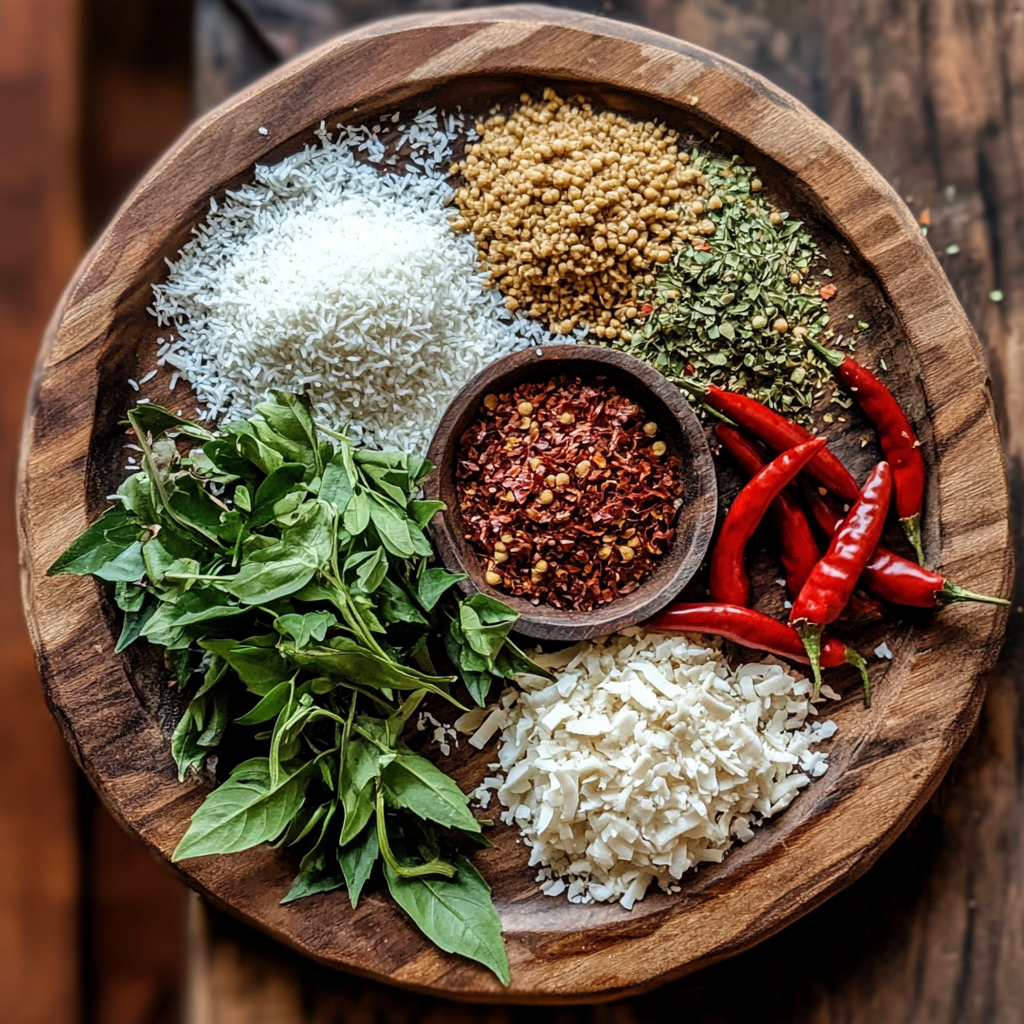
Step-by-Step Instructions to Make Devasthana Saaru
Now that we have all our key ingredients ready, let’s walk through the step-by-step process of making Devasthana Saaru. This recipe is designed to be straightforward, so even if you’re new to South Indian cooking, you’ll find it easy to follow.
Step 1: Roast the Dry Ingredients
Begin by heating a pan over medium heat. Add 1 tablespoon of coriander seeds, 1 teaspoon of cumin seeds, and 4 dried red chillies. Roast the spices until they turn golden brown and become fragrant, about 2-3 minutes. Be careful not to burn them, as that can lead to a bitter taste in the final dish.
Once roasted, transfer the spices to a plate and let them cool. The cooling step is essential before grinding, as hot spices can release excess oils and become clumpy when ground.

Step 2: Grind the Roasted Ingredients
After the roasted spices have cooled, place them in a blender or spice grinder. Add ½ cup of freshly grated coconut, ½ teaspoon of turmeric powder, and a small piece of tamarind (about the size of a marble). Add a few tablespoons of water to help blend the mixture smoothly.
Grind the mixture into a fine, smooth paste. This coconut-spice paste is the base for our Devasthana Saaru and will give the broth its rich, complex flavor.
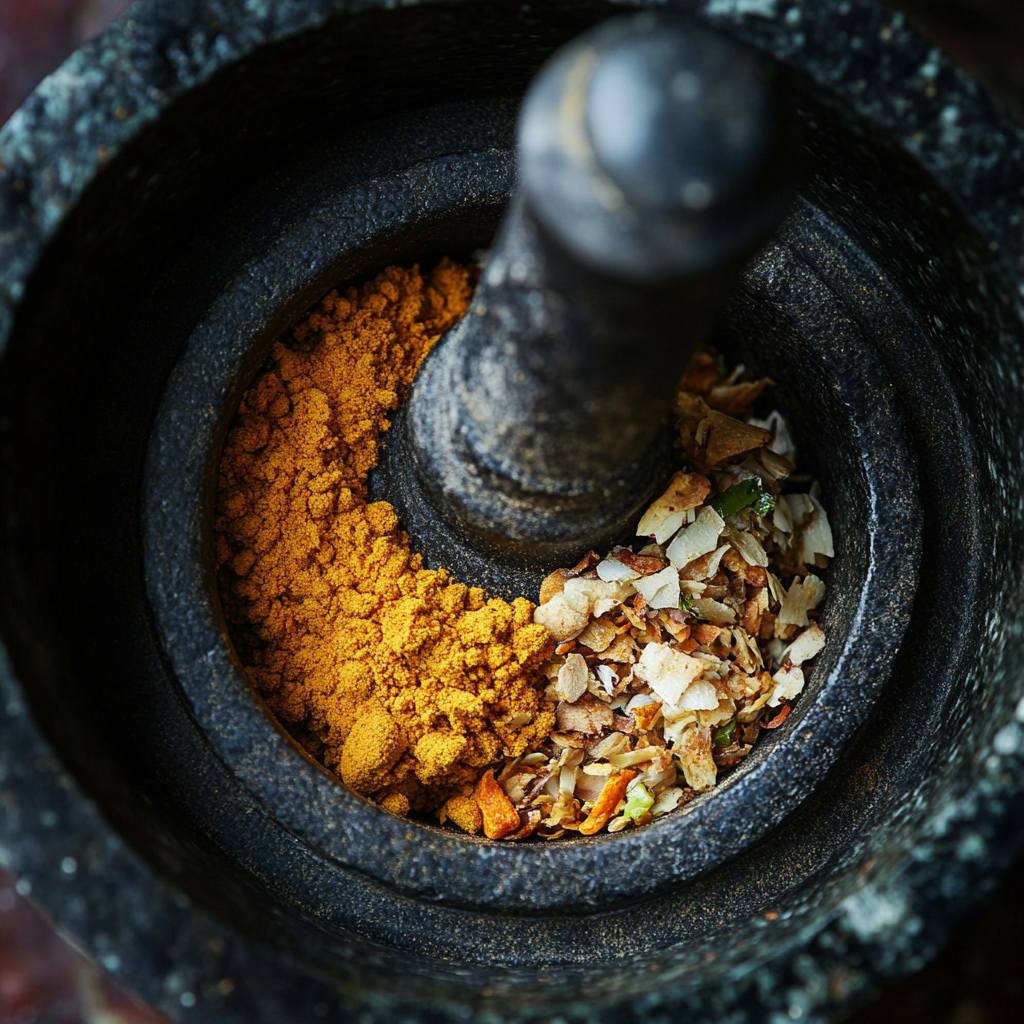
Step 3: Prepare the Tempering
In a large pot, heat 1 tablespoon of oil over medium heat. Once the oil is hot, add 1 teaspoon of mustard seeds and wait for them to splutter. This step releases the oils in the mustard seeds and adds a slight bitterness that complements the sourness of the tamarind.
Next, add a handful of fresh curry leaves and 2 slit green chillies to the pot. Stir-fry these ingredients until the curry leaves become crisp and fragrant.
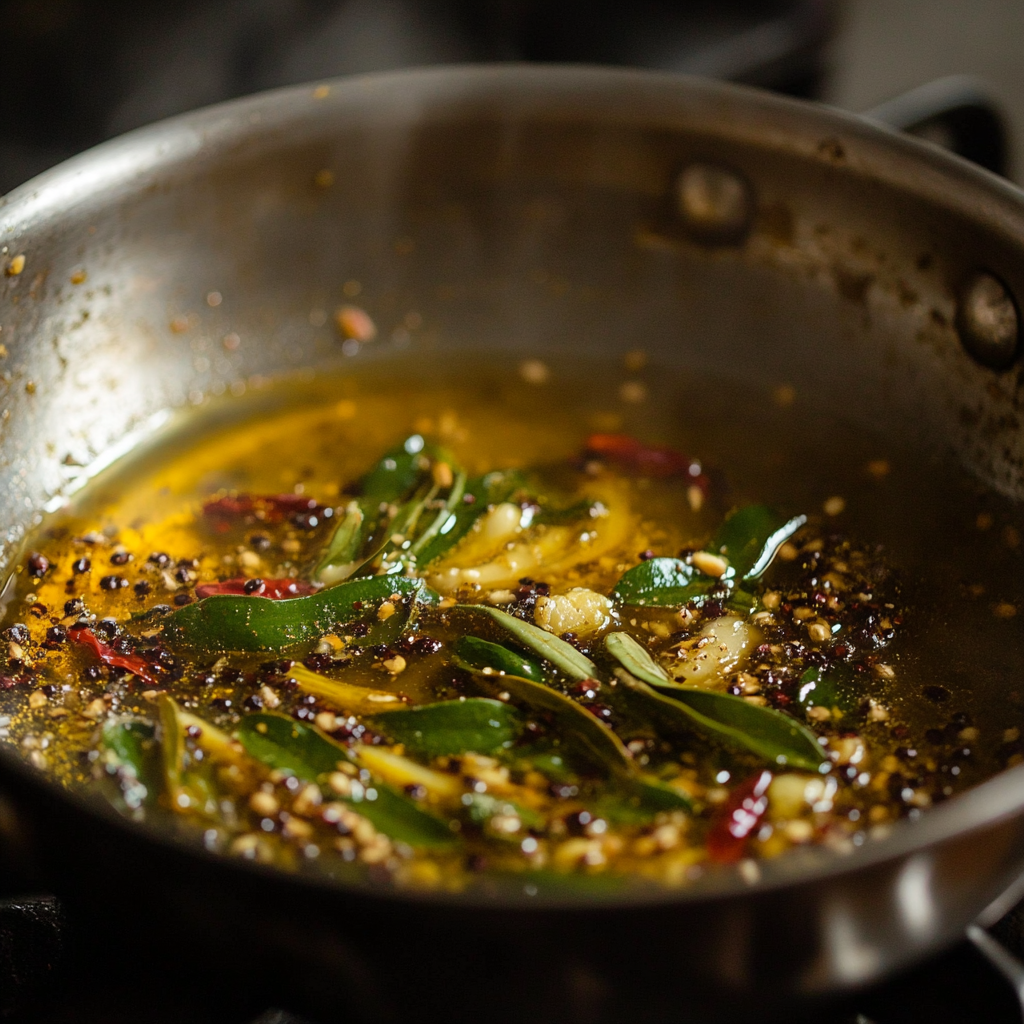
Step 4: Add the Coconut-Spice Paste
Now that the tempering is ready, add the coconut-spice paste to the pot. Sauté the paste for 2-3 minutes, stirring continuously to ensure that the flavors meld together. Cooking the paste allows the raw spices to release their flavors into the oil, enriching the overall taste of the saaru.
Step 5: Simmer the Saaru
Once the paste is well-incorporated, add 3 cups of water to the pot, stirring until everything is well combined. Bring the mixture to a boil, then reduce the heat and let it simmer for 10-15 minutes. Simmering allows the flavors to develop and meld, giving the saaru its characteristic depth and richness.
Taste the saaru and adjust the seasoning as needed. Add salt to taste and more water if you prefer a thinner consistency.
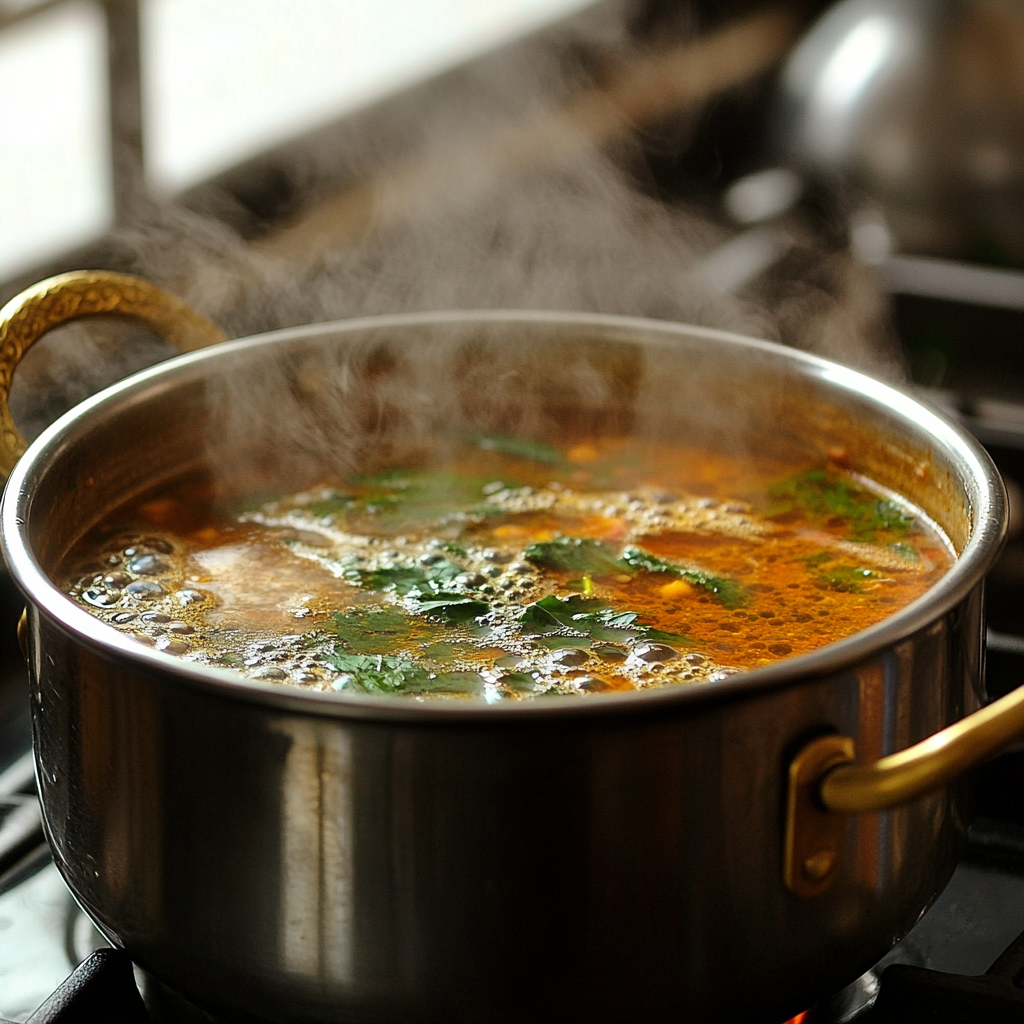
Step 6: Garnish and Serve
Once the saaru has simmered to perfection, turn off the heat. Garnish the dish with freshly chopped coriander leaves, which will add a bright, fresh note to the finished soup. Serve the saaru piping hot with a side of steamed rice or enjoy it as a comforting bowl of soup on its own.
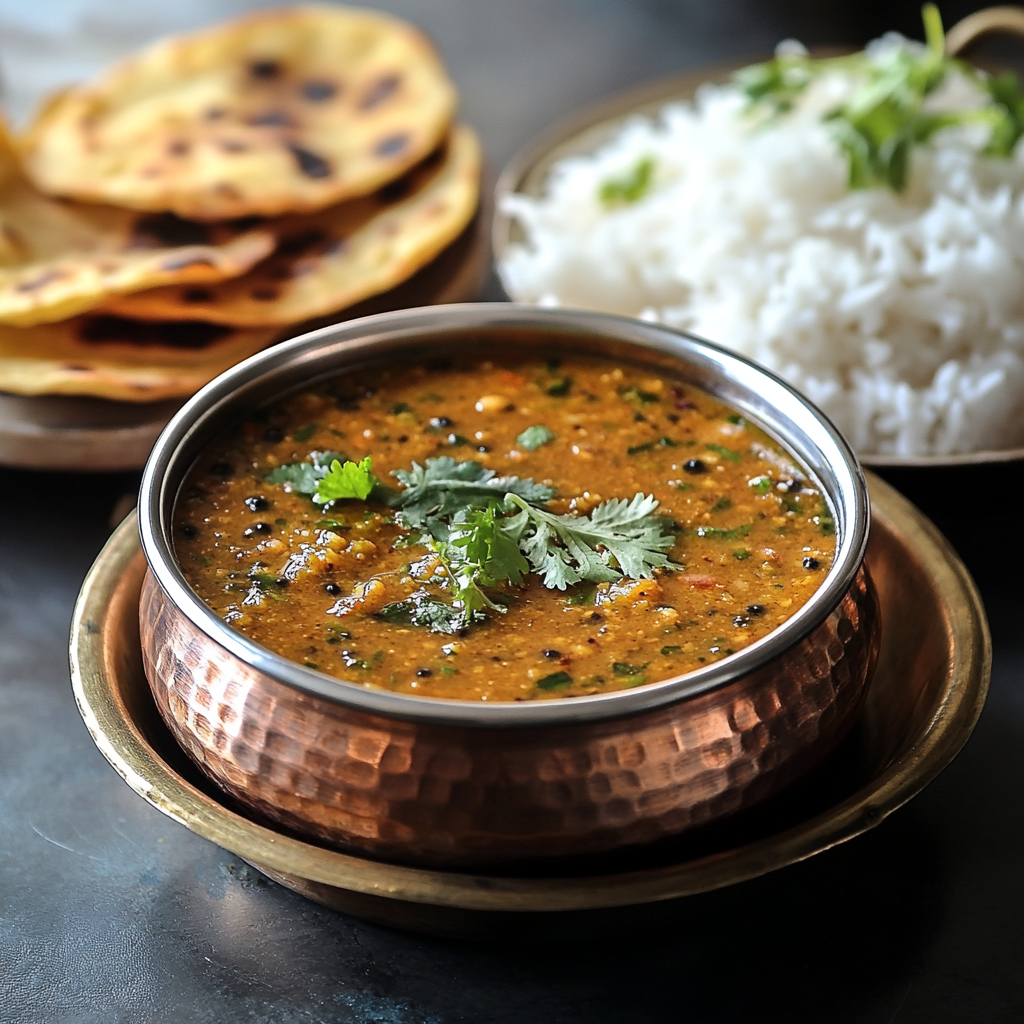
Flavor Variations and Additions
Devasthana Saaru is a dish that can be easily adapted to suit different palates and dietary needs. While the traditional recipe is perfect on its own, here are a few ways to enhance or modify the dish:
1. Vegan and Protein-Packed
The recipe is naturally vegan, as it uses no animal products. However, if you want to add some plant-based protein, consider adding cooked lentils or chickpeas to the saaru. The addition of legumes will not only make the dish heartier but also add protein and fiber, making it a more filling meal.
2. Spice Control
For those who enjoy a milder saaru, you can reduce the number of red chillies and green chillies in the recipe. Alternatively, to spice things up, you can add a pinch of black pepper or an extra green chilli during the tempering stage.
3. Coconut-Free Option
If you prefer to make a version without coconut, you can substitute the grated coconut with a few tablespoons of coconut milk. This will give the dish a slightly different texture but will maintain the signature creaminess that coconut provides.
Health Benefits of Devasthana Saaru Ingredients
Beyond being a flavorful dish, Devasthana Saaru is packed with ingredients that have numerous health benefits. Let’s take a closer look at how each key component contributes to your overall wellness.
1. Coriander Seeds
Coriander seeds are a rich source of antioxidants that help promote digestion and fight inflammation. These seeds have been traditionally used to treat digestive issues like bloating and indigestion. In addition, coriander seeds contain compounds that may help lower blood sugar levels, making them beneficial for people managing diabetes.
2. Cumin Seeds
Cumin seeds are another digestive powerhouse. They have been used for centuries to relieve bloating, gas, and indigestion. Cumin is also high in iron, which is essential for producing hemoglobin and preventing anemia. Additionally, cumin seeds are known for their immune-boosting properties, thanks to their antimicrobial effects.
3. Coconut
Coconut is not only a delicious addition to the saaru, but it also provides numerous health benefits. Rich in healthy fats, particularly medium-chain triglycerides (MCTs), coconut provides a quick source of energy. It is also a good source of fiber, which helps with digestion and keeps you feeling full for longer.
4. Turmeric
Turmeric is one of the most powerful natural anti-inflammatories available. Its active compound, curcumin, has been shown to reduce inflammation, improve brain function, and lower the risk of heart disease. Adding turmeric to your diet can help support joint health, reduce the risk of chronic disease, and improve overall well-being.
5. Tamarind
Tamarind is high in vitamin C, an essential antioxidant that helps boost the immune system and fight off infections. Tamarind is also rich in antioxidants, which help neutralize harmful free radicals in the body. Additionally, tamarind has been traditionally used to treat digestive issues, such as constipation, due to its mild laxative properties.
External Link:
For more information on the health benefits of turmeric and its role in reducing inflammation, check out this in-depth article from a Heathline blog.
Frequently Asked Questions (FAQs)
1. Can I make Devasthana Saaru ahead of time?
Yes, you can prepare Devasthana Saaru ahead of time, and in fact, the flavors tend to deepen and improve as the dish sits. Store the saaru in an airtight container in the refrigerator for up to 2-3 days. When you’re ready to serve it, simply reheat on the stovetop, adding a little water if needed to adjust the consistency.
2. How should I store leftovers?
Leftover Devasthana Saaru can be stored in the refrigerator for up to 3 days. Make sure to use an airtight container to preserve the freshness. When reheating, you may need to add some water to restore the original consistency, as the saaru tends to thicken as it cools.
3. How can I adjust this recipe for specific dietary needs?
This recipe is already vegan and gluten-free, so it’s suitable for a wide range of diets. If you’re looking to add more protein, consider incorporating boiled lentils or chickpeas into the dish. If you prefer a spicier version, you can increase the number of red chillies or add an extra green chilli during the tempering process.
For more delicious dinner recipes, be sure to check out our Dinner Recipes section and explore a variety of flavorful options to elevate your mealtime!
Conclusion
Devasthana Saaru is more than just a dish – it’s a cultural experience. With its roots in Konkani temple cuisine, this recipe combines the best of traditional South Indian flavors in a dish that is not only comforting but also nutritious. The combination of roasted spices, grated coconut, and tangy tamarind creates a unique flavor profile that will keep you coming back for more. Plus, it’s versatile enough to be enjoyed on its own as a warming soup or paired with rice for a more substantial meal.
We hope you’ll give this recipe a try and experience the beauty of Konkani cuisine in your own kitchen. Don’t forget to share your version with us, and explore more of our Konkani recipes for other delicious options to add to your meal plan.
